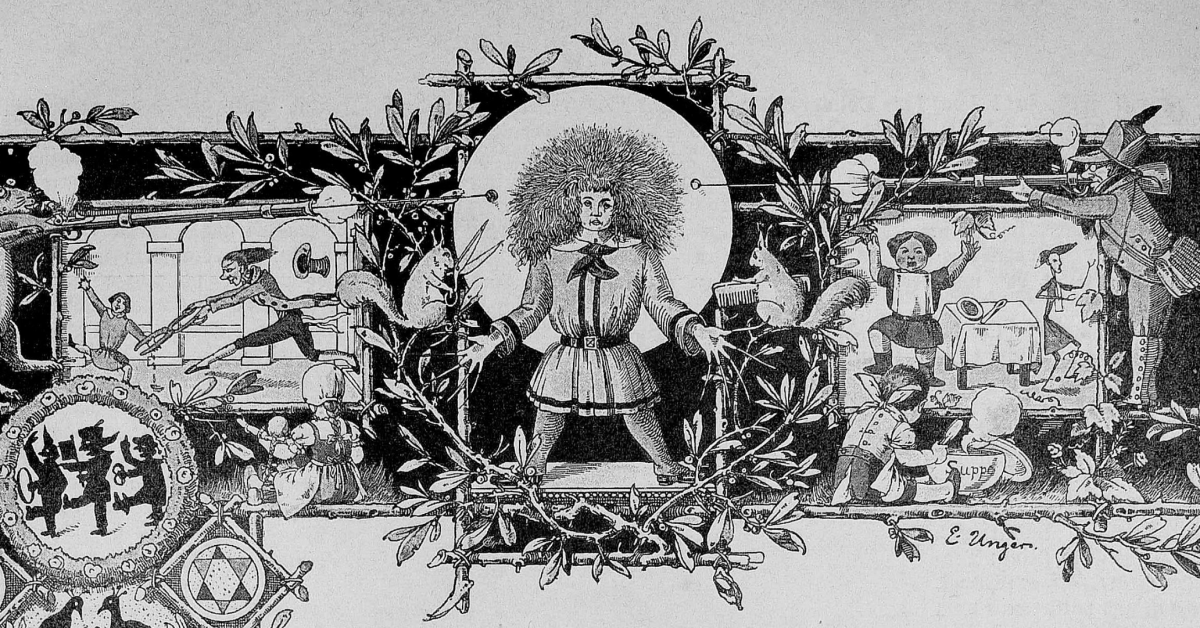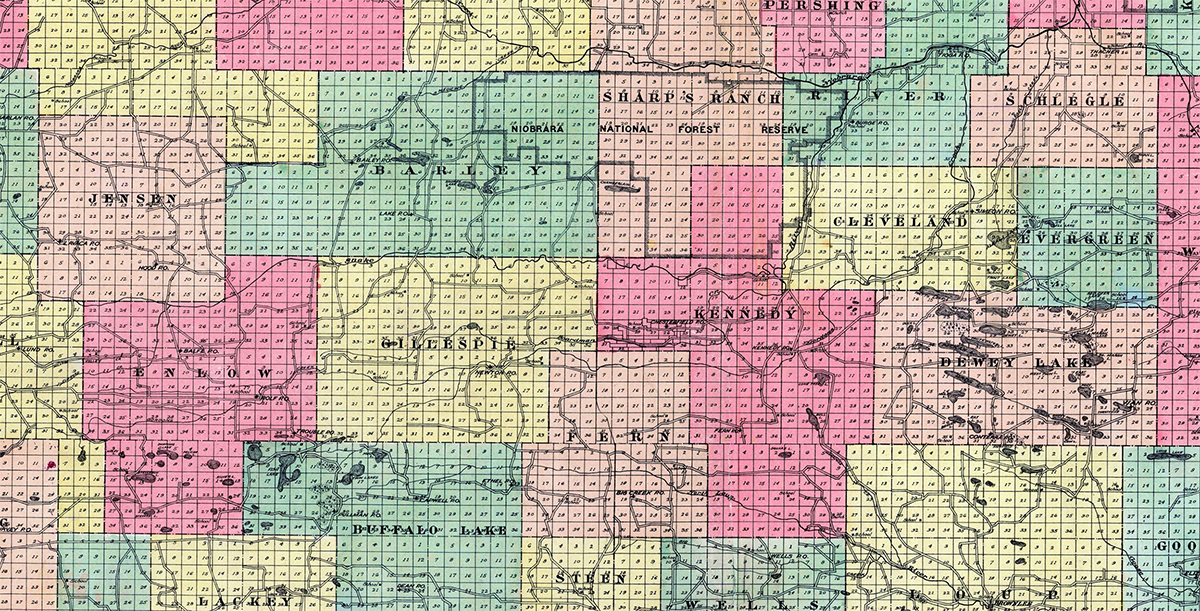In 2021, the state of Maryland voted to get rid of its official state song without a replacement. The bills to scrap the anthem passed in the state’s Senate and House of Representatives by overwhelming majorities. People couldn’t wait to dump their state song.
What turned Marylanders against the anthem they’d been singing for eighty years? The introductory verse of Maryland, My Maryland offers our first hint, opening the anthem with “The despot’s heel is on thy shore.” The sixth continues the trail with “Dear mother! Burst thy tyrant’s chain!” and the eighth caps us off strong with “Thou will not yield the Vandal toll.”
It’s an anti-authoritarian anthem. No surprises so far; America loves that shit. Just south of Maryland on the opposite bank of the Potomac, neighbor Virginia claims “Sic semper tyrannis”, (‘thus always to tyrants’) as its threat-laced state motto. Further north, granite-strewn New Hampshire went with “Live Free or Die”, echoing Patrick Henry’s famed “give me liberty or give me death.” And then there’s revolutionary war general and South Carolinan Christopher Gadsden’s “Don’t Tread on Me” flag, now better known as the centerfold highlight of every libertarian porn magazine from 1775 onward.
Since the outbreak of the Revolutionary War, a conflict fought to throw off the yoke held sturdy by an unelected imperial overlord, anti-authoritarianism has kinda been America’s thing. So what makes Maryland’s enshrined fist to authority different? Why did this middle finger need to be taped down while the others fly free? Far and away, the most distinguishing factor is the target. For Virginia, New Hampshire, and Gadsden, the liberty-threatening tyrant caught in their sights is the British Empire. In Maryland, My Maryland, it’s Abraham Lincoln.
Today, Lincoln is typically regarded as one of the best American presidents, almost always landing in one of the two top spots in historians’ rankings of the country’s chief executives. He’s on the penny and the five dollar bill. If we take that as an official, legally-binding valuation of five dollars and one cent, only two Presidents rank higher: Ulysses S. Grant, whose whole presidency was built on his success in the war he fought for Lincoln, and Andrew Jackson, whose “pros” include that time he beat up a would-be two-gun-wielding assassin with his cane and whose “cons” include everything else he ever did from womb to grave.
Maybe currency isn’t the best way to rate a President’s historical significance and value. What about statues? A massive sculpture of the 16th president overlooks the national mall at the Lincoln Memorial. If the man could be bothered to stand, he’d be a full twenty-eight feet tall, dwarfing the nineteen-foot statue of Thomas Jefferson stood brooding in his own memorial, though both pale in comparison to the 555-foot tall sculpture of George Washington’s erect penis squarely within Abe’s eye line on the other end of the reflecting pool.
That’s one example. Let’s look at another. Over in my home state of South Dakota, where one man’s sacred ancestral land is another KKK associate’s canvas, Lincoln is one of four men whose visages grace Mount Rushmore. Four mostly-disembodied heads. All belonging to titans of American history. Guess which one’s the tallest?
Okay. You get it, yeah? The point is that Americans love Lincoln. But not all Americans, at least not always. Because one time, a century and a half ago, some Americans were at war with him. Two leaders of that war, co-chairs of the anti-Lincoln Brigade, the President and Vice President of the Confederate States of America, blamed their rival co-President for the outbreak of the Civil War, citing tyrannical tendencies. (“Tyrannical” here is clever mid-1860s code for “this guy might take the slaves away.”). When theater actor John Wilkes Booth assassinated Lincoln in his attempt to become the first of his profession to successfully “break a leg”, he afterward famously shouted “sic semper tyrannis”, evoking Virginia’s anti-tyrant state branding at Lincoln’s expense and altogether ruining a very nice evening.
In other words, Maryland, My Maryland is a kind of a countercultural hymn for a world where “the culture” is people who don’t think we should keep brutally forcing humans to labor without pay in service of plantation porticoes and centuries-out-of-date debutante balls. (Gentlemen, I do declare my daughter is ready to fuck.)
So Maryland’s state song is just one more relic in a sea of enshrined reminders of the Confederate cause, floating alongside the flag of Georgia and former flag of Mississippi, both of which sport (or sported) the Confederate Battle Flag, every racist’s favorite “complex symbol”, as well as myriad statues of White guys mid-tantrum at the thought of not being able to own their fellow humans anymore.
The song goes on. Some of its more on-the-nose lyrics decry “Northern scum” and argue that “Virginia should not call in vain”. All in all, it’s pretty boilerplate confederate rabble-rousing, the sort of thing we’d expect to find in contemporary accounts from any of the states divorcing themselves from Washington. But the difference between Maryland and its other pro-Confederate kin in states like Georgia, Mississippi, and Virginia is that Maryland never seceded from the United States. It was never part of the Confederacy.
If you’re not sufficiently shocked, this is kinda like finding out France’s national anthem is a song called “Our Friend Hitler”, or that Japan’s official motto is “Kublai Khan is welcome here.”
Of course, it’s not quite the same. While textbooks sometimes paint the Civil War as an easily-delineated conflict between northern and southern states, the truth often cut along more granulated lines. In every state, no matter how near Canada or far from civilization, an interested investigator could find supporters of each side. But nowhere was this mixture of pro- and anti-confederate forces more contentious than the border states, states like Missouri, Kentucky, and Maryland, which remained in the union throughout the war but still allowed the owning of slaves. Lincoln’s own Emancipation Proclamation, celebrated for freeing the remaining American slaves, actually cut out a provision for Maryland, Missouri, and Kentucky, effectively freeing only those victims of slavery living in the states outside Washington’s control.
The poem that birthed Maryland, My Maryland was written by a journalist and poet, James Ryder Randall, a native Marylander who was, by his own account, overcome by emotion at the thought of American troops being used to put down the nascent southern rebellion. He describes the mood of his composition as an emotive trance inspired by a “conflagration of the senses” in 1861 as the war opened up around him. Today we’d call it incel rage.
Randall’s song carries the weight of a man (and a people) swept by the anger that follows the first fury-lined cries of war. Its most valid excuse is that it was written before the smoke of the first shots had cleared. He couldn’t have known just how bloody the Civil War would get.
But Maryland doesn’t get off that easy. The Old Line State didn’t put Randall’s poem to the tune of “O Tannenbaum” (no, for real) and adopt it as the state’s official anthem in 1861. No, the statute to accomplish that goal wouldn’t be passed until more than seven decades after the war’s end, in 1939. Six years after Hitler’s rise to power in Nazi Germany.
This was the rebirth of the Lost Cause of the Confederacy, a semi-dormant idea that had been growing in potency since the war’s end and the prematurely-aborted process of post-war reconstruction. Many of the Civil War relics we’ve come to know today, like statues of southern generals or state flags emblazoned with the Confederate battle standard, weren’t minted until nearly a century after Robert E. Lee surrendered his forces to General Ulysses S. Grant at Appomattox Courthouse (the town, not the building).
Groups like the United Daughters of the Confederacy have argued that their intention in erecting monuments to those who fought for the losing side in America’s bloodiest internal conflict is to commemorate their ancestors and keep alive the history of the short-lived breakaway republic. But critics, of which there are many, point out that these memorials serve as more of a message, particularly to those who were victimized by the Confederacy and the institutions that created it, monuments to slavery, the plantation economy, and white supremacy.
These symbols were erected, not when they were most contemporarily relevant, but when they were most useful as a weapon against the march toward civil rights and as a reminder of the country’s unspoken but ever-present hierarchy.
Let’s recap. Until recently, Maryland’s state song was a fierce polemic targeting Abraham Lincoln, an anthem written in defense of the Confederacy, a country Maryland was never a part of. And still, it was adopted not during, but decades after the war had ended and the two sides had reconciled.
State legislators had tried before to repeal the song’s official status, first in 1974, then again in 1980, then 1984, then 2001, 2002, 2009, 2016, 2018, and 2019. In the end, the “if at first you don’t succeed…” ethos won out and the bill that ended the reign of Maryland’s worst O Tannenbaum parody was signed by Governor Larry Hogan on May 18, 2021.
An alternative version of the song that hailed the Union government instead of its southern neighbor in the vein of the Union take on “Dixie” (“Away down south in the land of traitors“) was written, but never adopted. With Governor Hogan’s signing of the bill, Maryland was left song-less.
This is new for Maryland, but a state ridding itself of a wack anthem is not without precedent. The state’s southern neighbor, Virginia, the one Randall spent so much time trying to cozy up to in his poem, had a similar come-to-Lincoln moment in 1997 when they scrapped their old anthem, Come Back to Old Virginny, another mid-20th century Confederate callback, whose lyrics tell the story of a slave (the writer uses a different word) who misses his master so much that he can’t wait until he dies so he can be reunited with him forever.
Virginia eventually replaced their weird Slave x Ghost Master fanfic anthem in 2015 with one that lauds the state’s geography and somehow doesn’t use a single slur.
Maybe it’s something about the Mid-Atlantic water, or maybe it’s not wanting to be left out, but in 2023, the year of this piece’s publication, Maryland’s northern neighbor, Pennsylvania, also threatened to join the trend of getting rid of outdated state songs.
Pennsylvania’s hymn, aptly titled Pennsylvania, also targets tyranny and celebrates a fight for freedom, but there’s no “Abe Lincoln’s a bitch” line. It’s a clear, if boring, call to the fight for independence that underscores the early story of America and resonates even more strongly in Pennsylvania. There’s no “Jefferson Davis did nothing wrong”, and, again, not a single racial slur. It’s also not all that outdated. It was written in the 1960s and adopted in 1990. I say all of this, first to differentiate it from Maryland and Virginia’s songs, but also to cement that the Pennsylvania state congresspeople cosponsoring the bull to remove it don’t think it’s offensive; they think it sucks.
If Pennsylvania’s government decides to get rid of Pennsylvania (the song, not the state), they’ll have the opportunity to either choose a replacement or languish with Maryland in state song limbo. But neither will be as at home there as New Jersey, a state that wouldn’t complain if Pennsylvania accidentally did away with Pennsylvania the state instead of Pennsylvania the song. New Jersey, somehow officially known as The Garden State, is the only state that’s never had a state song.
It’s come close. One proud New Jerseyan, Joseph Rocco Mascari, better known (but probably not by you) as Red Mascara, penned the tune I’m From New Jersey and spent years personally lobbying his state’s congress to make it the official anthem. It came closest in 1972, when a bill to grant the song official status made it all the way to the desk of Governor William Cahill, who promptly vetoed the proposal, owing to a personal distaste for the would-be anthem. The power of the executive veto, as you know, is a controversial one. Its use represents the decision of a governor or President to impose their own will over the democratic decisions of the appropriate legislature. It’s a big move. This guy used it because he thought a song was shitty.
Another bill almost made five separate songs the co-official state song of New Jersey but died when the Senate president argued five was too many. And again, in 1980, New Jersey did the obvious in attempting to solidify native son Bruce Springsteen’s Born to Run as the state’s official rock anthem. But that plan too was gummed up when legislators took issue with the line “It’s a death trap. It’s a suicide rap. We gotta get out while we’re young.” To which I say: C’mon, New Jersey. Own your brand.
Five songs sounds a little heavy, sure. Most states have one. North Dakota recently adopted their second. But no state is near as gluttonous as Tennessee, who already harbored ten official state songs before adding two more earlier this year. That total of twelve includes the state’s official bicentennial rap, granted official status in 1996.
One of West Virginia’s official anthems (and the one they’re proudest of) is Take Me Home, Country Roads, one of the few state songs you’re likely to have heard, co-written by folk legend John Denver, who at the time of its composition had never been to West Virginia. Actually, the scenery Denver details in his lyrics is better attributed to the western part of Virginia than its mountain neighbor.
Most anthems aren’t very notable. I’m not confident I know the tune of Minnesota’s, and I know from the research that birthed this piece that it’s just a remix of the official fight song of my alma mater, the University of Minnesota.
This acknowledged, I think Maryland has a few options. First, they could languish in anthem-less hell. It’s worked for New Jersey, and no one’s ever had anything bad to say about that state. Second, they could do the easy thing and pick something with a boring name like “Maryland, My Maryland” but without the trimmings of an Honest Abe diss track. Talk about how Maryland has wide open sky and pretty trees and the people are just the tops.
Third, and my personal pick: go nuts. Pick a tune that really stands out as much as your flag does. Tell the story of a freed slave who’s fucking ecstatic to hear his weird, daughter-pawning master just died. Name drop The Wire. New Jersey is too scared to pick up an anthem that implies the state sucks. Show them up, adapt The Fall of the House of Usher for a military brass band.
Do something. Or do nothing. As long as you don’t turn around and do what you did. C’mon, Maryland, I’m 60% sure you’re better than that.
Read More
- Maryland poised to say goodbye to state song that celebrates the Confederacy by Ovetta Wiggins for The Washington Post
- Maryland Repeals State Song That Called Lincoln a ‘Tyrant’ by Scott Neuman for NPR
- Pennsylvanians Might Soon Be Singing a New State Song by Teresa Nowakowski for Smithsonian Magazine
- Real story behind ‘Take Me Home, Country Roads’ by Neal Augenstein for WTOP News
- When a State Song Is a Confederate Battle Cry by Colette Shade for The New Republic
- Why is New Jersey the only state that’s never had a state song? by Alfred Lubrano for The Philadelphia Enquirer
- List of U.S. state songs from Wikipedia





